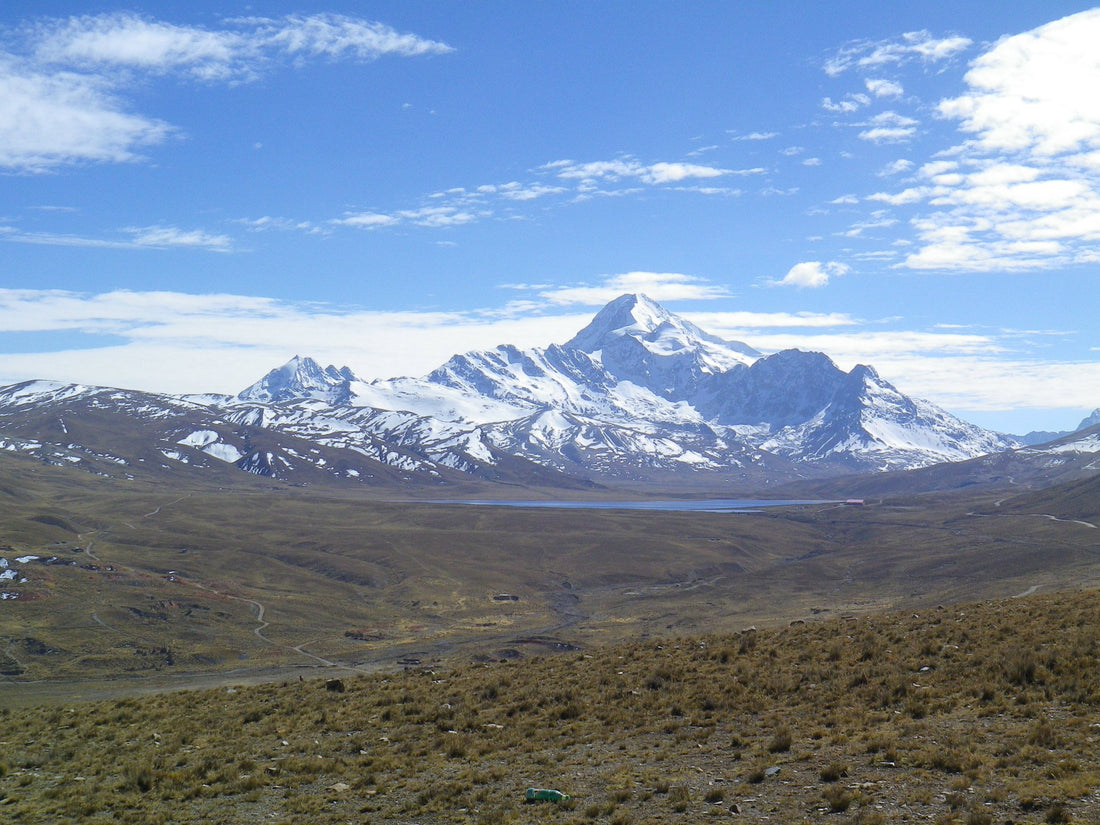
Where to go Mountaineering in July
Share
We’ve officially passed the solstice, which means days are starting to shorten in the Northern Hemisphere already – but don’t let that stop you getting out and making the most of it. Of course, for those hardy souls over-wintering in Antarctica, this marks the halfway point of the endless night. There’s plenty of adventures to be had at this time of year. These are some suggestions, but as always, you’ll need to check up to date information regarding access and logistics, particularly for those areas subject to geo-political tensions. Here’s a little inspiration for the month of July. And if not this year, why not next?
Europe & the Middle East
The summer season is in full swing in the Alps, and July can be a good month for attempting many of the 4000m peaks, whether that’s the ‘Spaghetti Tour’ of the Monte Rosa massif, the lesser-known peaks of the Bernese Oberland or the classics like Mont Blanc and the Matterhorn. Bear in mind, the condition of routes and their approaches is heavily influenced by the amount of winter snowfall and the spring-time temperatures.
Continuing the theme of 4000m peaks (other altitudes are available!), the likes of Toubkal in Morocco and Mount Ararat in Turkey are often climbed in July.
If you fancy less snow and more rock (and the potential for more gelato!), the Italian Dolomites are a climbers’ playground. While the rock might look chossy (and in places, it is!), there are some great days out to be had. From roadside sport cragging, to multipitch rock routes across the grade spectrum, or epic test pieces like the Comici on the Cima Grande. No trip would be complete without trying some of the historic Via Ferrata, which is a great way to cover a lot of terrain and get to some spectacularly exposed places with little technical risk. The views in July are particularly stunning with flowers in the valley contrasting with snow on the higher summits.
Asia
If you’re after bigger, more adventurous challenges, then central Asia has a lot to offer in July. If you want to test yourself at over 7000m (e.g. Khan Tengri in Kazakhstan), the Tien Shan range which borders China and the ‘Stans is worth considering. Similarly, the Pamir range in Tajikistan, with Muztagh Ata offering a fairly non-technical introduction to higher altitudes. Of course, there are many more peaks with varying degrees of technical difficulty – the benefit being you’re in the heart of the highest mountain ranges in the world, so whichever way you look there will be something to inspire you!
Many of the tallest and most technically challenging mountains in the world are found in the Karakorum range in the Pakistan/China border regions. The likes of K2, Broad Peak and Gasherbrum I & II (all over 8000m) are multi-month undertakings, and by July teams are usually establishing basecamp at the head of the Baltoro glacier. At 63km long, it’s one of the longest glaciers outside of the polar regions. Just trekking to the camp at Concordia is an incredible experience in its own right.
Australasia
Carstenz Pyramid is arguably the most technical of the Seven Summits, and because of its location near the Equator the weather is tropical and wet, so there is no real ‘good season’ to climb it. However, July is high season for tourism in Indonesia, while in Malaysia there are plenty of other interesting rocky peaks including Mount Kinabalu on the island of Borneo.
North America
The Alaskan climbing season draws to a close this month, but there are plenty more opportunities for adventure in the ‘proper’ North. Greenland still has an abundance of unclimbed and not-too-technical alpine peaks, which aren’t as inaccessible as you might think.
Baffin Island has acres of incredible and as-yet unclimbed rock walls, with approaches possible by sailing boat, kayak or plane. There’s a great write up on Bronwen’s blog to give you a real idea of what lies in store. The weather can be extremely fickle, last year being particularly warm and wet for example.
Although much closer to civilisation in terms of miles, there’s nothing very accessible about Canada’s extensive Coast Mountains. But if you’re after a remote, wild and secluded Alpine experience and are prepared to put the effort in to get there (think days of bush-whacking!), then it can be a very rewarding place to explore. If that’s a bit too much commitment, then mountaineering season in the Rockies also kicks off in July, with long daylight hours, generally good weather, low rock fall, and good glacier travel conditions typical this month.

Caldron Peak above Peyto Lake in the Canadian Rockies
Further south into the USA, July is generally a good month for mountains in the North Cascades (e.g. Mount Rainier), with the weather being more stable and glacier conditions better than later in the summer.
South America
Despite being in the Southern hemisphere and therefore technically in mid-winter, there are loads of mountainous areas in the Andes which are mid-season in July.
In Bolivia, you have the Cordillera Apolobamba, Lipez, and Real (including Illimani) all of which are stunning alpine ranges which are relatively easy to access. Just factor in feeling terrible in La Paz for a few days after landing at the world’s highest international airport at 4062m!
For more technical climbs, Peru has loads to offer including the Cordillera Huayhuash, (home of the infamous Siula Grand and THAT crevasse) and the often argued ‘most beautiful mountain in the world’ Alpamayo. There are also a number of volcanoes worth climbing in Ecuador (including Cotopaxi) and loads more in the Cordillera Occidental chain that spans Peru, Bolivia, and Chile. Some of them are still active which adds another dimension to the usual mountain hazards you might encounter.
So there you have it. July is a bumper month for climbing and mountaineering adventures around the world!
